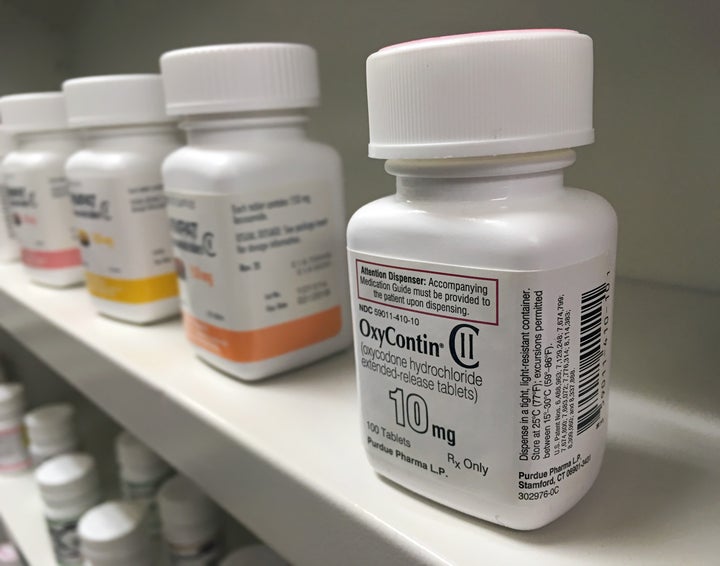
I’m a physician who specializes in addiction medicine, which means I’ve been busy lately. Busy treating some of the millions of Americans affected by the opioid crisis. Busy advocating for my colleagues in primary care to do the same.
In lectures and workshops, I ask them to start prescribing medications to help treat opioid addiction. I tell them patients are dying — and have died — because they are unable to find providers willing to help them. I remind them that drug overdose is now the leading cause of death for adults under 50 and that a medication called buprenorphine, which they have the power to prescribe, can cut that death rate by more than half.
This is a crisis, I tell them. We must act.
Not infrequently, my colleagues — smart, compassionate, dedicated doctors, nurses and physician assistants — refuse.
They tell me they bought the pharmaceutical company line once already, back when primary care providers were told to take care of patients’ pain and then given no resources other than opioids to do so.
They tell me they were taught that opioids weren’t addictive if prescribed to a patient in pain.
They describe how they were taught, as I was, that they needed to ask all their patients, every time, if they hurt, where they hurt and how much.
It turns out providers often weren’t helping those patients; we harmed them. Maybe even killed them. We helped start the opioid epidemic. So no, they tell me, they will not buy the promise of a magic pill again.
I want to shake them and scream, “This is not the same thing!” Opioids for chronic pain often have only moderate efficacy and carry significant risks; buprenorphine saves lives and helps decrease risk of HIV infection. I want them to stop arguing and just prescribe it.
“The overprescription of pain pills created a population of patients dependent on opioids, some of whom became addicted to the medication.”
However, I also understand their concerns. I once had a large and loyal cohort of patients whose pain I treated with opioids, opioids and more opioids.
One middle-aged couple in particular sticks in my memory. He was soft and starting to bald; she was small, sad and always in pain everywhere. In rushed 15-minute appointments, I’d ask her to point to a pain scale consisting of cartoon faces in a line, ranging in order from happy painlessness to a face in such agony it was sobbing. She’d point to that last round head, and I’d again prescribe her OxyContin. The couple would thank me for being the doctor who finally understood her pain, finally understood that she needed help, relief and compassion.
But I didn’t understand. At all. I had received no training in the treatment of pain. I didn’t know if counseling would help.
I didn’t know which kinds of physical therapy, injections or surgeries my patients might need, whether those interventions worked or how to get any of it covered by insurers.
I didn’t know that persisting pain is often connected to depression, anxiety and trauma.
I didn’t know how to recognize addiction ― or how to treat it.
All I knew was that when I suggested my patient taper the OxyContin, she’d crumple in despair. And her soft husband would, like the Hulk, become monstrously large and angry, demanding I show some compassion, god damn it.
It’s possible my patient was addicted to opioids. It’s more likely she wasn’t and that she simply had few options for pain control besides those pills, which, at minimum, helped her mentally check out of her misery. She was desperate for relief, and I was desperate to be useful. She was just one of my many patients in pain, and I didn’t know the right thing to do, the wrong thing or where to get help. I also knew insurance wouldn’t cover most of the alternative treatments I might offer.
It wore me down. I began to hate my patients’ gratitude when I prescribed opioids and to resent their anger when I suggested tapering. I stopped listening, except in a cursory way. I met their needs, documented my exam and often otherwise tuned out. I also stopped being the kind of doctor I’d aspired to be. I thought about leaving the profession.
“I will continue to push providers to use medication to treat substance-use disorders. But I also know that without dedicated resources, response will be limited.”
So I get it. Primary care providers are not again accepting the promise of a little pill to solve a complex problem. They are drawing a line in the sand. They will not again close their eyes, prescribe and wonder, “What about my patients’ mental health/unemployment/housing crisis/childhood trauma? Am I treating the right problem? Am I really helping at all?”
Primary care providers need systems that help them answer these questions and resources that allow them to care for patients, not just prescribe to them.
At the height of my burnout, I began working at an agency that focused on providing health care for homeless individuals. We treated patients with tremendous psychic and physical pain and patients with long histories of addiction.
I worked with a team of colleagues — many with histories of substance-use disorders, most without medical degrees — who knew that our patients needed more than a 15-minute visit and a pill if they were to succeed. Our team included staffers who accompanied clients to their court dates and to the food bank and to housing appointments and counselors who addressed trauma, helped clients find other ways to cope and helped them consider forgiveness ― of themselves and others.
The care we provided wasn’t perfect, and many of our patients continued to struggle or left the agency. But many stayed and slowly put their lives back together. And in a clinical context that provided my patients — and me — with a network of support, I learned to love my work again. My patients, in turn, got the best version of me, the version that wanted to be there and took the time to listen.
The overprescription of pain pills created a population of patients dependent on opioids, some of whom became addicted to the medication. It also created a frustrated, burned out and mistrusting generation of providers who aren’t interested in taking on management of yet another complicated condition with promises of a miracle medication and nothing else.
“I’d received no training in the treatment of pain ... I didn’t know how to recognize addiction — or how to treat it.”
This is particularly difficult because the opioid crisis has moved well beyond just a problem of prescribed pills in primary care; it is now fueled by heroin and illicitly obtained drugs like fentanyl, and deaths are escalating. Every day, we lose more than 100 Americans to overdose and thousands more to complications from addiction.
So I will continue to push providers to use medication to treat substance-use disorders. But I also know that without dedicated resources, response will be limited. Some clinicians will opt in, either because they believe it is the right thing to do or because their clinic policies mandate they do so. But without sufficient resources, many physicians will continue to opt out.
Worse, those who opt in will be set up to fail, and their worries will thus be reinforced: Patients with substance-use disorders are too difficult, too out of control, too different to be treated in primary care. We will be back where started, with primary care providers reluctant to treat patients who have substance-use disorders and with patients (strangers, friends, neighbors, family members) dying in record numbers.
It’s critical that policymakers, health systems and governments listen to the frustrated, burned out, mistrusting providers who refuse to treat addiction. Yes, there are other reasons providers decline to treat addiction. Stigma. Discrimination. Lack of training. And there is tremendous work to be done on those fronts.
However, most providers entered medicine because they wanted to alleviate suffering. And most providers ― particularly those on the front lines of primary care ― also know that in the long run, complex problems require complex solutions.
Medications like buprenorphine help save lives, and we need to prescribe them, now. But we also can’t lose sight of the larger solution, which must be more than just 15 minutes and a pill.
Need help with substance abuse or mental health issues? In the U.S., call 800-662-HELP (4357) for the SAMHSA National Helpline.
Jessica Gregg is an associate professor of medicine in the section of addiction medicine at Oregon Health and Science University. She is the medical director for OHSU’s addiction medicine ECHO clinic and the associate program director for OHSU’s addiction medicine fellowship.
